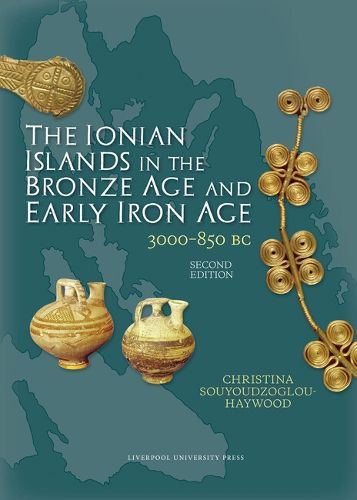Readings Newsletter
Become a Readings Member to make your shopping experience even easier.
Sign in or sign up for free!
You’re not far away from qualifying for FREE standard shipping within Australia
You’ve qualified for FREE standard shipping within Australia
The cart is loading…






The central Ionian Islands occupy a special geographical position in the eastern Mediterranean. On the one hand they face and are in close proximity to the western Greek mainland and on the other they are connected with the western Balkans and the central Mediterranean through the Ionian and Adriatic seas. Although, with the exception of Corfu, they were integrated in the Aegean cultural sphere of influence throughout the Bronze Age and Early Iron Age, their marginal position and insularity also contributed to the formation of particular sociocultural identities, individually and as a group. On occasions these conditions also made them highly desirable as spaces for wide-ranging maritime-based interactions and inter-cultural exchanges. Culturally the islands remained above all a part of the western periphery of the Aegean world, pulsing to its major changes and upheavals.
In the twenty years since the first edition of The Ionian Islands in the Bronze Age and Early Iron Age came out there has been a significant surge of interest in peripheries and their role in the construction of cultural and historical narratives about Greece over the centuries. Yet the Ionian Islands have by and large been left behind in these discussions. This fully revised second edition of the book incorporates all the recent discoveries and studies, as well as updating a large part of the earlier evidence, and aims to bring the islands back to the centre of debates and showcase their relevance.
$9.00 standard shipping within Australia
FREE standard shipping within Australia for orders over $100.00
Express & International shipping calculated at checkout
The central Ionian Islands occupy a special geographical position in the eastern Mediterranean. On the one hand they face and are in close proximity to the western Greek mainland and on the other they are connected with the western Balkans and the central Mediterranean through the Ionian and Adriatic seas. Although, with the exception of Corfu, they were integrated in the Aegean cultural sphere of influence throughout the Bronze Age and Early Iron Age, their marginal position and insularity also contributed to the formation of particular sociocultural identities, individually and as a group. On occasions these conditions also made them highly desirable as spaces for wide-ranging maritime-based interactions and inter-cultural exchanges. Culturally the islands remained above all a part of the western periphery of the Aegean world, pulsing to its major changes and upheavals.
In the twenty years since the first edition of The Ionian Islands in the Bronze Age and Early Iron Age came out there has been a significant surge of interest in peripheries and their role in the construction of cultural and historical narratives about Greece over the centuries. Yet the Ionian Islands have by and large been left behind in these discussions. This fully revised second edition of the book incorporates all the recent discoveries and studies, as well as updating a large part of the earlier evidence, and aims to bring the islands back to the centre of debates and showcase their relevance.